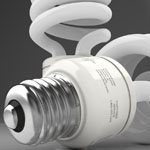
Product Design Brazil can help you visualize your designs in a wide range of styles from high-quality photorealistic renderings, to easy to understand line drawings and illustrations.
Flexible camera settings help achieve realism.
Mix and match photorealistic and Illustrative rendering styles.
Simulate a vast array of complex materials -- everything from hard reflective materials to soft, translucent plastics.
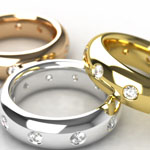
Jewelry Design Brazil is the ideal renderer for the hard-surfaces and complex light interaction needed by jewelry designers.
Diffusion in materials along with HDRI lighting create brillance in gemstones.
Realistic lighting through caustic photon reflections and refractions.
Advanced camera features, like depth-of-field, help show scale and make your renderings look like photographs.
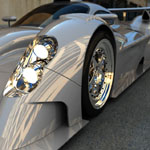
Transportation Design Sharp rendering and multilevel materials allow Brazil to simulate the complex material finishes needed for planes, trains and automobiles.
Simple to use HDRI lighting makes set-up a snap.
Accurate reflections communicate surface contours.
Accurate shadowing and flexibility in camera lenses help create a sense of scale in your images.
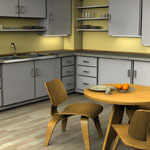
Architectural Design Brazil's render engine has the performance and flexibility to render all forms of exteriors, interiors and landscaping.
Global Illumination and industry standard IES photometric datasets from lighting manufacturers can be used.
Sunlighting system allows for site specific daylighting studies.
Sophisticated, realistic materials allow you to work equally well whether doing interiors or exterior
Brazil is:
A great rendering engine, but not the only great rendering engine.
Tightly integrated with Rhino, but not easy to master.
Example Image
This image was rendered in Brazil for Rhino, and it shows advanced features that you will not find in simpler rendering platforms such as the Rhino renderer or Flamingo:
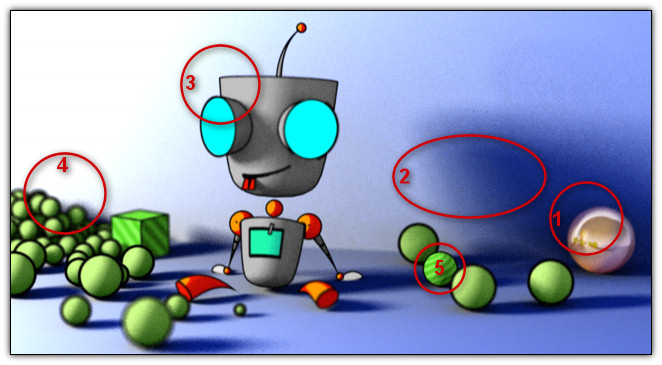
The five details highlighted in this image represent an advanced feature: (1) Raytracing, (2) Advanced lighting, (3) Toon rendering, (4) Depth of field, (5) Procedural textures.
Brazil's advanced raytrace engine simulates a wide range of effects including:
Reflection
Refraction (transparency)
Dispersion (prismatic rainbow effects)
Sub-surface scattering (diffuse light transmitting materials such as wax or skin)
Glossy reflections (blurry or brushed materials)

Brazil light features include:
Decay (darkening of light as a function of distance to the source)
Attenuation (amplification of brightness as a function of distance to the source)
Focus control (rectangular, conical, cylindrical etc.)
Projections (emitting a picture or procedural texture instead of a color)
Exclusion lists (lights ignore specified objects in the scene)
Brazil includes non-photoreal (NPR) effects such as toon shaders.
Depth-of-field (DOF) simulates the imperfect focusing properties of physical lens-systems such as biological eyes and cameras. DOF adds a measure of realism to a rendering by blurring out-of-focus areas. It can also be used to "mask" areas of the scene such as distant surroundings.
The settings for DOF include:
Focus distance
Radius
F-stop
Bokeh abberations (the effect over-exposed areas in an image have when they are out of focus)
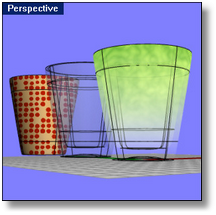
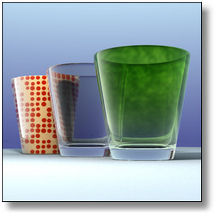
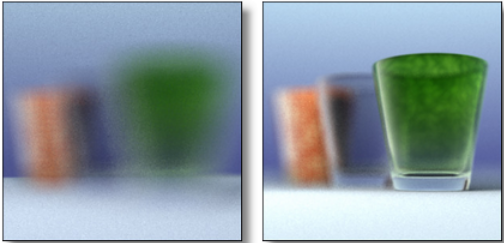
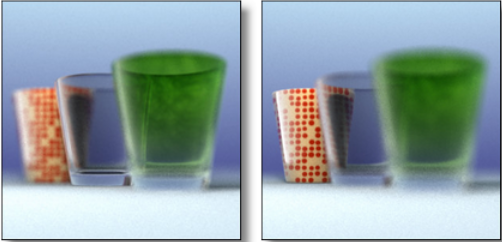
Brazil supports both bitmap and procedural textures. Bitmap textures use images (a grid of colored pixels). Procedural textures, on the other hand, are defined by a mathematical function. Procedural textures do not suffer from resolution or tiling problems, and it is easy to change their behavior. Procedural textures are simulated in the Rhino viewport to make adjustments easy.